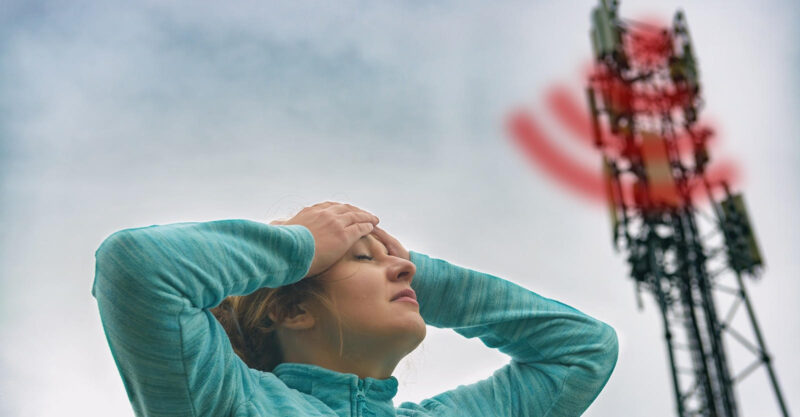CHD Urges FCC to Accommodate Millions Sickened by Wireless Radiation
Children’s Health Defense joined 50 safe technology and disability advocacy groups in filing legal comments urging the Federal Communications Commission to provide access to wired broadband for people who are sensitive to and harmed by wireless technology.
Miss a day, miss a lot. Subscribe to The Defender's Top News of the Day. It's free.
Children’s Health Defense (CHD) along with 50 nonprofits, safe technology groups and disability advocacy groups this month filed legal comments with the Federal Communications Commission (FCC) in response to the FCC’s request for comment on how to “prevent and eliminate digital discrimination.”
The proceeding was required by the Infrastructure Investment and Jobs Act and President Biden’s Executive Order 13985, “Advancing Racial Equity and Support for Underserved Communities Through the Federal Government.”
Cosigners include Frank Clegg, former president of Microsoft Canada and founder of Canadians for Safe Technology, and Kent Chamberlin, Ph.D., of New Hampshire’s Commission to Study the Environmental and Health Effects of Evolving 5G Technology.
The groups called for acceptance, affirmation and inclusion of the electromagnetically sensitive (EMS) and EMS-disabled community — a growing segment of the disability community, which includes people harmed by wireless technology such as cell towers, smart meters and Wi-Fi and mobile phones.
The term EMS has been used since 2002 by the U.S. Access Board, an independent federal agency that advises the government on guidelines for accommodation.
The Access Board promised to remove barriers to access for the EMS-disabled. However, 20 years later, that promise has not been fulfilled.
In their legal comments, the groups explained that EMS-disabled people experience a unique form of “digital discrimination” because they cannot be around radiofrequency (RF) radiation as it makes them sick.
Advocates for the EMS-disabled, including CHD, support the FCC’s goals to advance equity “in the provision of and access to digital communication services and products for all people of the U.S., without discrimination on the basis of race, color, religion, national origin, sex or disability.”
However, they said, the EMS-disabled are suffering largely because of the FCC’s own actions, which include trying to flood all parts of the country and people’s homes with wireless radiation — even if it severely harms millions of Americans — while refusing to accept or recognize the existence of EMS disability.
“The FCC is actively forcing wireless exposure that it knows is hurting people,” said Mary Holland, CHD president and general counsel.
Holland said:
“The FCC is well aware of the grievous injuries it is causing, but it persists. Those with severe symptoms are functionally excluded from public participation, since almost all public spaces are flooded with RF.
“This technology emits a toxin that significantly impacts the brain and other organs, triggering disabling headaches, ‘brain fog,’ vertigo, difficulty sleeping, skin rashes and a host of other symptoms.
CHD is “all for equity” and has a history of supporting the disabled, Holland said. “But what could be more unfair than forcing this technology on people whose bodies perceive it as a toxin that often creates profoundly disabling symptoms?”
According to the comments filed by CHD and the 50 cosigners, when cell towers are built in front of people’s homes with no notification, and the disabled are given no say in those decisions and no recourse, the disabled cannot even take refuge in their own homes.
Instead, they are driven out and made more miserable in a sometimes hostile and threatening environment.
“Those who cannot be around RF — which according to estimates includes between 3% and 30% of the population — must have the ability, as a matter of right, to access wired (fiber-based) broadband,” Holland said. “Otherwise, they will functionally be denied access to any broadband at all.”
CHD’s comments were accompanied by a white paper, “Eliminating Digital Discrimination for the EMS Disabled,” by Susan Foster and Odette J. Wilkins. The paper provides suggestions for accommodation, including “wireless-free zones” in public places.
The public has until June 30 to submit comments to the FCC demanding the agency recognize the need for special measures to address the EMS-disabled community by making wired (fiber-based) broadband the preferred mod of broadband delivery.
Click here to submit a comment to the FCC by June 30. Click here to learn more.
Sign up for free news and updates from Robert F. Kennedy, Jr. and the Children’s Health Defense. CHD is implementing many strategies, including legal, in an effort to defend the health of our children and obtain justice for those already injured. Your support is essential to CHD’s successful mission.

